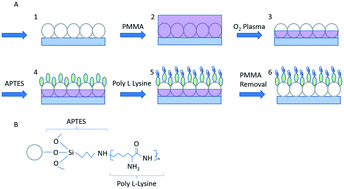Impacts of particle surface heterogeneity on the deposition of colloids on flat surfaces†
Abstract
Natural particles possess varying degrees of surface heterogeneities. Although the impact of collector surface heterogeneity on particle deposition is more or less established, the impact of particle surface heterogeneity on the deposition of colloids in porous media is not well studied. In this work, Janus SiO2 microparticles (Janus SiO2 MPs) were engineered by partially covering SiO2 microspheres (500 nm in diameter) with positively charged poly(L-lysine) (PLL) as model particles to study the impact of particle surface heterogeneity on the deposition. The surface heterogeneity of Janus SiO2 MP was confirmed using Kelvin probe force microscopy. Up to 4–5 original SiO2 microspheres tended to assemble in the solution to form relatively stable clusters, with an isoelectric point slightly higher than pH 7. Compared with unmodified SiO2 microspheres, Janus SiO2 MPs had a slower attachment rate on silicon dioxide surfaces. While the deposition of Janus SiO2 MPs onto silicon dioxide surfaces was observed at pH values of 3 and 7, no deposition was observed at pH 9. No deposition was observed for Janus SiO2 MPs onto aluminum oxide surfaces for pH values ranging from 3 to 9, even under an overall favorable attractive condition. This work found that the deposition of colloids is more sensitive to particle surface heterogeneity properties than to the overall surface potential of the colloids.



 Please wait while we load your content...
Please wait while we load your content...